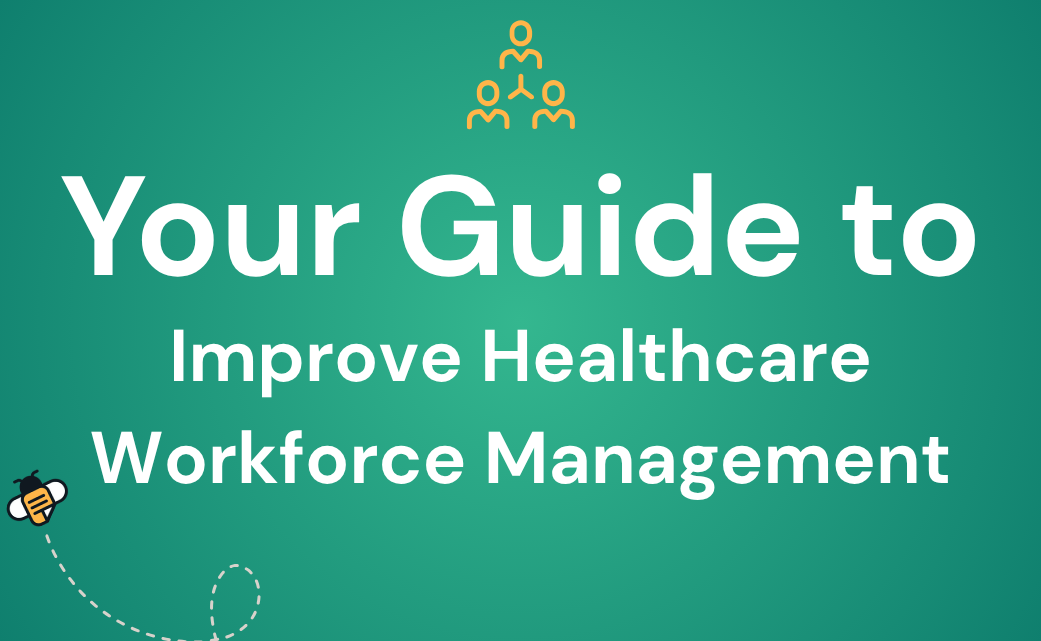Small law firms’ management needs are inherently different from those of larger practices. From resource constraints to competition with bigger fish, the task of establishing a successful legal practice can seem daunting. Yet firms can excel with strategic use of technology, careful client and competitor relationship management, and data-driven decision-making. Let’s discover what those unique needs are – and how to free up your attorneys’ time without necessarily hiring more.
Small Law Firms’ Unique Needs & Challenges
Several challenges may impact how partners run their small law firm. Yet when taken in stride, these apparent drawbacks can be transformed into opportunities.
Size and Resource Constraints
Unlike larger practices, small law firms’ management challenges stem from fewer resources. In 2020, Thompson Reuters found that smaller practices spent as much as 40 percent of their time on tasks like administration, leaving only 60 percent for practicing law. Attorneys trying to manage their time can become overwhelmed with these repeatable tasks.
Too many new hires may be unrealistic with such limited resources. Yet a successful law practice depends on having the time to devote to clients. As a result, small firms’ attorneys may face time management challenges – becoming overworked, experiencing burnout, and facing client frustration.
To mitigate this, it’s important to consider automation tools that can maximize legal teams’ efficiency. We’ll come back to this below.
Competition in the Legal Industry
Small firms can also feel outclassed by billion-dollar law firms as they seek to establish their client base. How can a small practice stand out if it can’t match these big competitors’ budgets or experience?
Start by focusing on the unique benefits a smaller firm can bring – which specific unmet needs are you in a position to fill? Consider newer legal service niches that might be harder for established firms to address, especially where a more personal approach could be an advantage.
Second, consider ways you can build relationships within the networks that align with your firm’s offerings. Also consider other, more experienced firms as possible partners, and seek to establish a referral or contract relationship with them. This will help you benefit from their scope and client relationships and leverage them as resources rather than just trying to compete.
Regulatory Compliance
Larger firms can easily bring in the legal professionals they need to remain compliant. But a small legal practice may not know where to start.
What legal requirements is your firm subject to? Bear in mind that certain laws apply generally to most practices, while others may apply to practice areas with unique risks. While we can’t offer legal advice here, we can list a few pointers for getting started. Some questions to ask include:
- What are the requirements for your firm’s chosen tax structure?
- Does your legal process provide a clear audit trail, from client communications to bookkeeping?
- Do you store clients’ sensitive information in compliance with legal and ethical obligations? Is your storage method secure?
- Is your payment system compliant with applicable anti-money laundering (AML) laws? Are you aware of any associated financial crime risks?
- Are you and your clients compliant with applicable AML obligations – such as those connected to the United States Corporate Transparency Act (CTA)? This includes any requirements to conduct client due diligence or a firm-wide risk assessment (a requirement for UK firms).
Given compliance’s constantly evolving nature, we recommend continuously educating your legal team members on the firm’s most current obligations and risks. If this is beyond your practice’s scope, it may be an area to outsource to a reputable company specializing in law firm compliance.
How to Manage Your Legal Team
As you develop your firm’s business plan, these several standard operating procedures can lay a solid foundation for success.
Create a Clear, Profitable Pricing Model
As you’re considering your firm’s pricing model, calculate all relevant expenses before deciding on the appropriate rates. Even time usage can (and should) be quantified in terms of cost, alongside other expenses such as hiring, outsourcing, and business overhead.
If you are providing special promotional rates, ensure they support, rather than undermine, a sustainable return on investment (ROI). Some trial and error is ok, as long as you are keeping your overall business plan grounded in concrete data.
Hire Strategically
Some firms may assume they should follow larger firms’ structures when building their teams. But this can create unsustainable costs for a small practice. Instead, consider a scalable, needs-based approach. Do a careful analysis of the services you are offering (or planning to offer) and the minimum resources you need to allow smooth operations.
Where are the resource gaps? Would personnel, technology, or some other approach best address the need? Hire for specifically identified needs and provide your team members with complementary strategies and resources. These may include new legal practice management tools, outsourcing some work, and even referrals to other firms you’ve established a rapport with. We discuss these options next.
Streamline Operations
Consider hiring alternatives that will streamline your daily operations. For example, Kristin Tyler of LAWCLERK recommends outsourcing excess work to freelance lawyers. Tyler says legal freelancers are undervalued assets that can benefit small firms.
Similarly, don’t try to do everything. Stick to what you are equipped for, and consider mutual referral relationships with other firms, or even outsourcing contract work that falls in their areas of specialty.
Finally, consider how automating repeatable tasks (like document signing) can drastically improve your firm’s use of time. Automated legal workflow solutions can free up your legal experts for higher-value work and could prevent the need to hire staff for excess administrative work that could be automated instead. It can also prepare your firm to scale by setting up efficient processes in its early days.
Build a Client Bases Strategically
Capitalize on your existing resources as you build your clientele. Also consider that as a smaller firm, you may appeal to clients as more personal and relational. Here are a few ways you can leverage these advantages:
- Tap into the power of relationships – Cultivate mutually beneficial conversations with existing connections that could recommend you by word of mouth or introduce you to potential clients. Create a strong sense of rapport with existing clients.
- Invest in collaboration with complementary firms – As mentioned above, this can take the shape of mutual referrals for specialty projects beyond your scope. It can also come in the form of providing contract work to other firms. Either way, you stand to mutually benefit one another by providing exposure to a fresh client base.
- Be intentional about your niche – Rather than competing against saturated markets, consider specializing in a legal service that will make you stand out naturally. Where does your expertise intersect with a growing, unmet need? By focusing on a unique practice area, you stand to attract more clients without investing as much into marketing as big firms do.
- Establish a presence as a thought leader – This ties into building relationships with the community your target audience is likely to participate in. Work toward establishing a social media presence where you frequently engage with other experts in the field and offer unique insights. A social media or public relations (PR) manager may be able to help with this.
Back Business Decisions with Data
Just as with hiring, all of a firm’s business decisions should be based on concrete data. Begin with a comprehensive analysis that includes your services and target clientele, existing or required resources, tax and compliance obligations, and projected business costs.
Translate this data into achievable, quantifiable goals, and repeat the analysis regularly as your firm matures. This lays the groundwork for sound decisions – and may highlight where your firm’s resources could be put to better use. Consulting a business expert can be helpful at this stage.
Although this may seem like a big project upfront, making decisions without all the facts could be extremely costly in the long run.
Best Practices: Sustaining Success with Smaller Teams
Setting up a small firm with care from the start will make scaling sustainably more realistic. Here are a few complementary ways you can foster ongoing success as a smaller law firm.
1. Regularly Update and Optimize Your Automation Tools
This goes hand in hand with continually reevaluating your needs and corresponding resources. As a law firm grows and evolves, it may shift its areas of specialization, adjust workflow styles, and encounter new client bases. Compliance needs may also change. As these changes occur, ensure your legal practice management tools are also reevaluated and updated to ensure they continue to meet your needs. The most flexible tools should be able to grow with you for years to come, but simpler solutions may eventually need upgrading.
2. Stay Informed About Legal Technology Trends
Even if your current tools are scalable and adaptable, technology is evolving exponentially. The rise of artificial intelligence capabilities like machine learning and natural language processing means the best tools may still be in development. Remain aware of how your chosen legal workflow solution compares to trending options.
3. Foster a Culture of Continuous Improvement
Transparent collaboration and communication can help to foster a proactive atmosphere, which in turn supports ongoing improvement at a cultural level. Avoid subjecting team members to siloed expectations. Instead, take advantage of integrated data, workflows, and analytics to maintain shared work toward a common goal. If upper leadership is on the same page as junior lawyers, paralegals, and administrators, the firm can face new challenges with greater agility.
4. Seek Feedback from Clients and Staff
Consult teams’ day-to-day experiences before making decisions that impact them. Not only will this support a culture of continuous improvement – you will also ensure you’re making data-driven business moves. The same goes for client experiences: those you serve may have unique perspectives on your strong points and opportunities for growth.
Make Managing Your Small Law Firm Easier with Docubee
Smaller law firms face unique challenges, but they also have unique opportunities larger firms wouldn’t dream of. One of these is the ability to respond with agility to changing needs and lay a solid foundation for future growth. The complexities of your legal practice’s daily work will only increase with your client base.
With this in mind, consider investing early in an automated, scalable legal practice management solution like Docubee. Firms can use it to maximize their limited resources. Some benefits include:
- Simplifying contract creation with custom templates
- Streamlining document creation & revision with automated collaboration
- Galvanizing legal project management with tailored task management
- Centralizing client communication with automated document signing & reminders
Find out how Docubee can help your small legal firm take flight. Schedule a demo now.


















